The TA-MOONS will be installed at the prime focus of the 3.6-meter Devasthal Optical Telescope, located at Nainital, Uttarakhand, India. The altitude of the location is about ~2424 meters amsl. The median seeing at the site is 1.1 arcsec. The telescope focal plane is first made telecentric and achromatic for the entire FoV of diameter 12 arcmin, using a triplet lens.
Front Optics
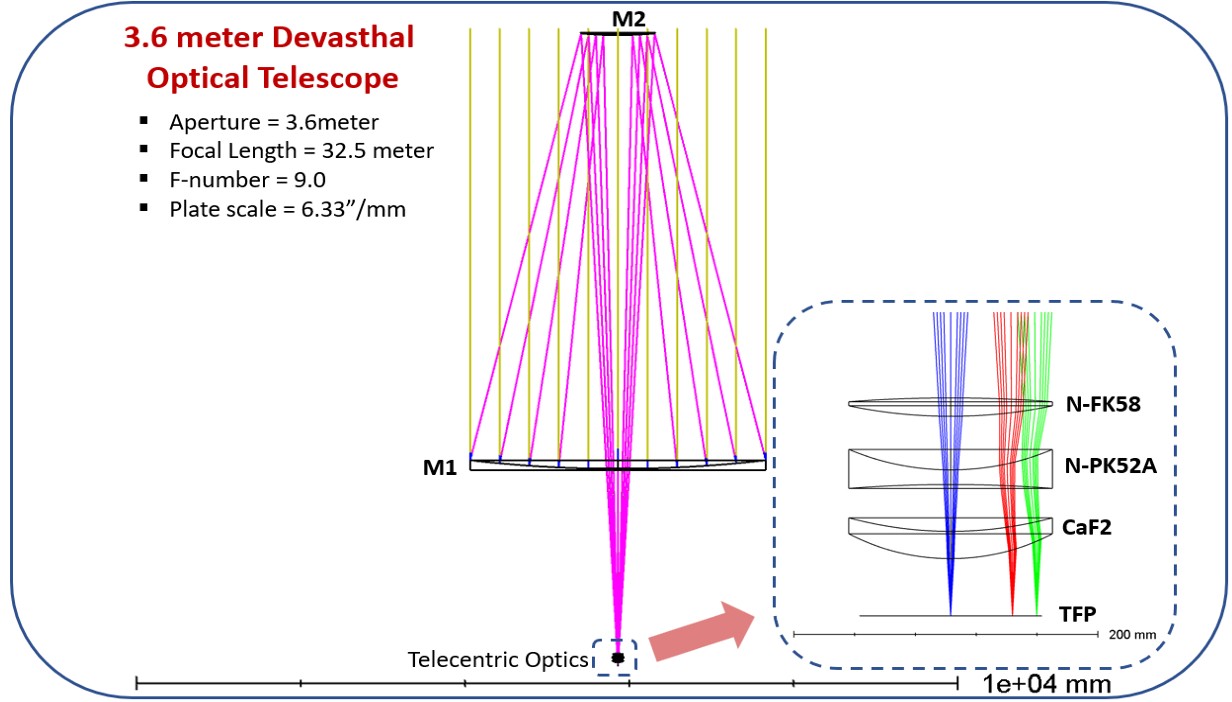

The pickup mirror (1-3) and the trombone (4) are on the same linear stage, providing the linear motion (r) while keeping the optical path length constant. The entire linear stage assembly rotates at the θ axis. A rotatable K mirror downstream is controlled by an independent motor for selecting the orientation of the field on the spectrograph slit. All the optics (9-13) below the dashed line are fixed and inside theradiation shield at cryo temperature.
The other end of 8-arms front optics re-images on to a compact staggered slit (of length ~8.7 mm) input to the two-arm spectrometer, viz. Visible and NIR arm, both wavebands are separated by a dichroic mirror next to the staggered slit.
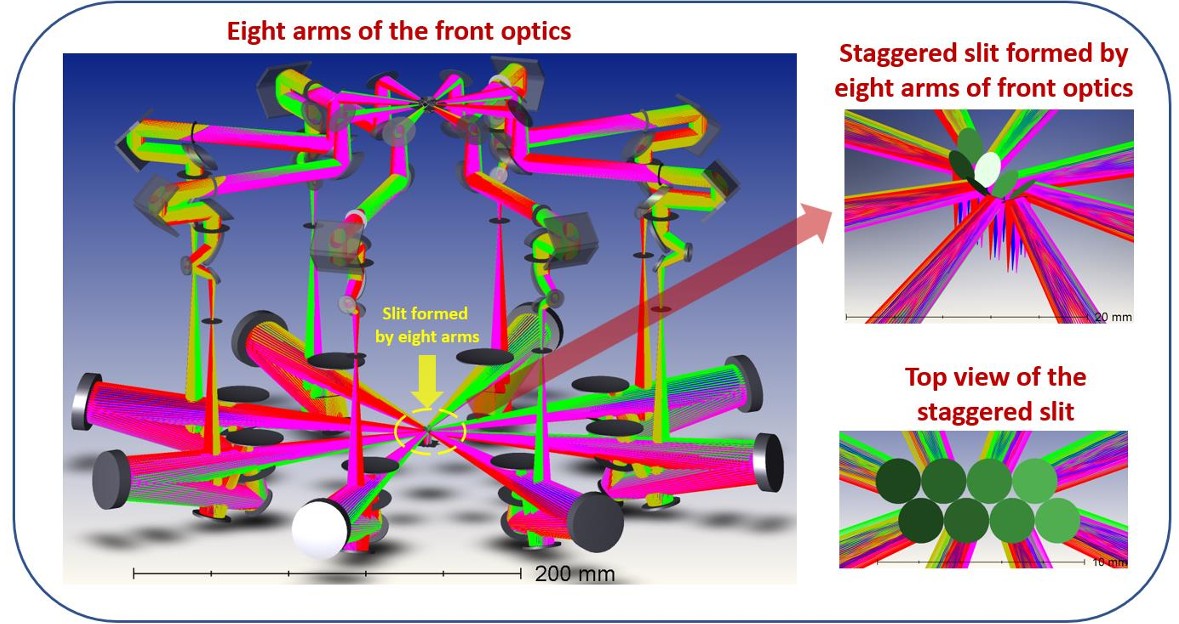
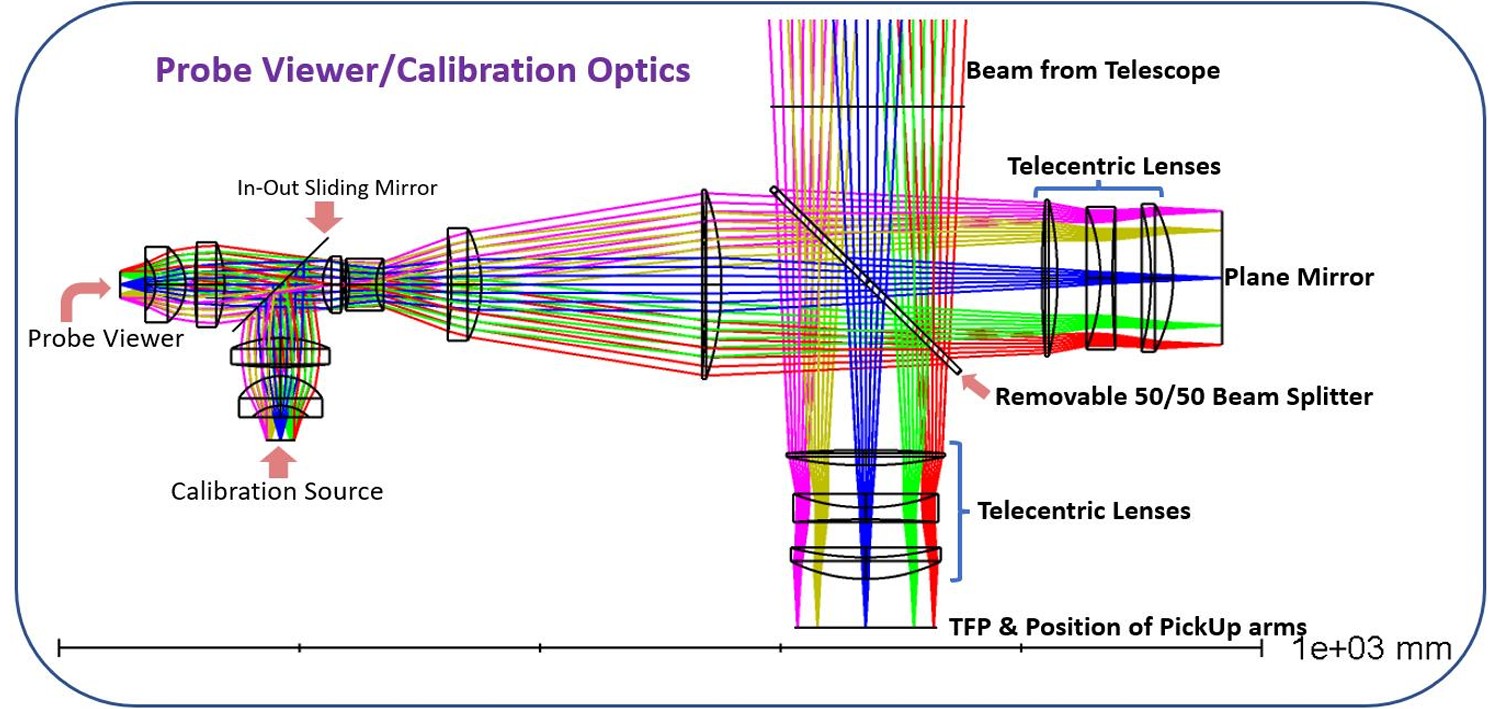
For precise closed loop positioning of pickup arms, probe viewer camera optics is designed. This camera images the entire sky field as well as probe positions simultaneously. The same optics will be used for wavelength calibration by using a calibration source insert.
Mechanics
The translation stage uses one stepper motor to drive two ball screws with different pitches. This moves the pick-up mirror and optical trombone simultaneously but at different rates, keeping the optical path length constant. The rotation stage, supporting each arm, has a ±22.5-degree range of motion. Both stages are powered by vacuum-compatible harmonic drive motors located outside the cryostat, connected via ferrofluidic feedthroughs to maintain vacuum integrity. These motors were selected for their high gear ratio and low backlash.
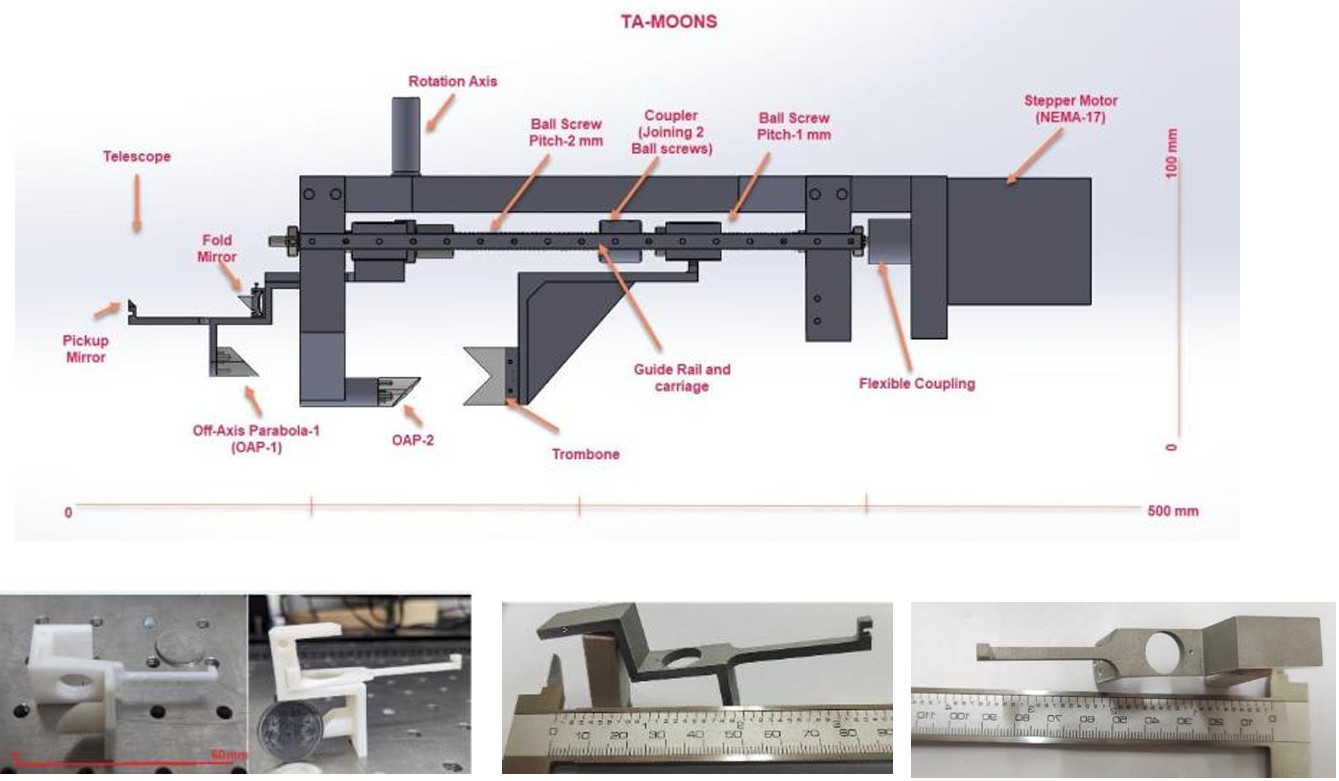
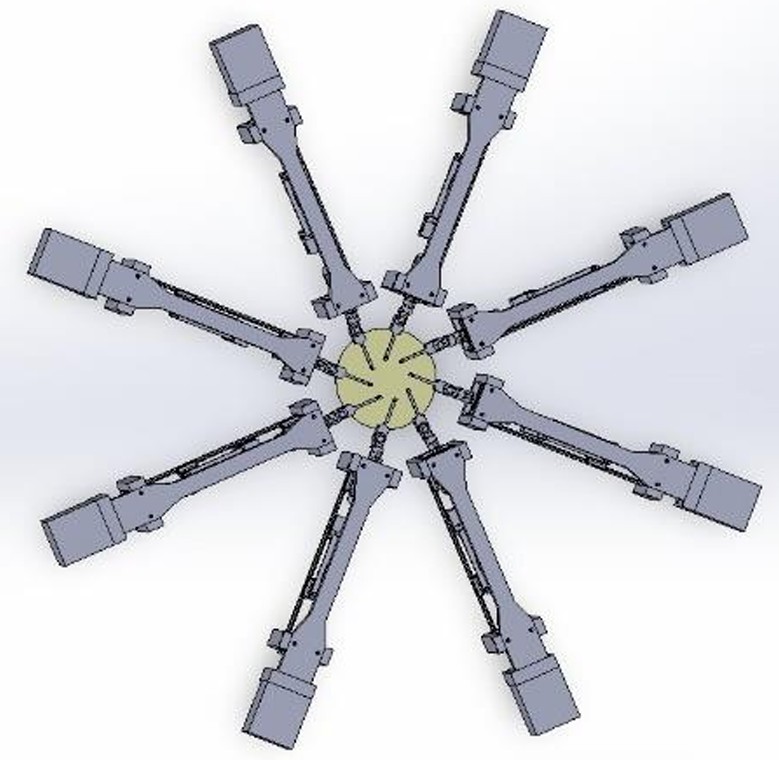
There will be a total of 8 nos. of pick-up arm systems deployed over the entire field of view to cover the focal plane. Figure-5 shows the overall configuration of all 8 pick-up arm systems. To maximize the patrol field of each arm, we minimized the width of the arms on the front end. The vacuum chamber that houses all the moving parts at ~250K will be separate from the main spectrograph cryo vacuum chamber. This will enable quick access to this compartment in the event of any unanticipated mechanical failure, or vacuum degassing.

_0.png)